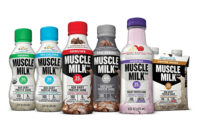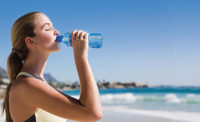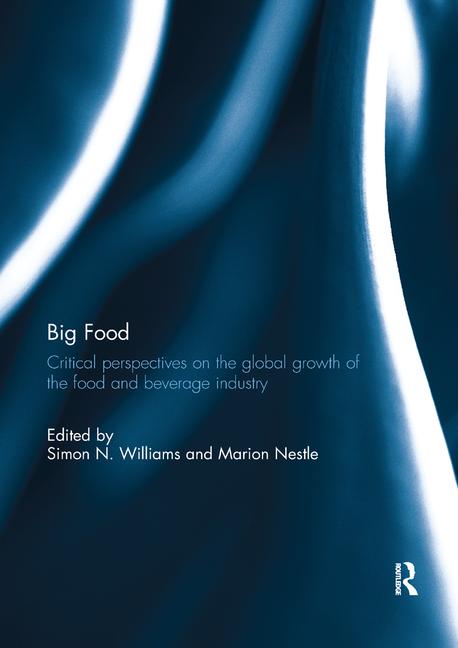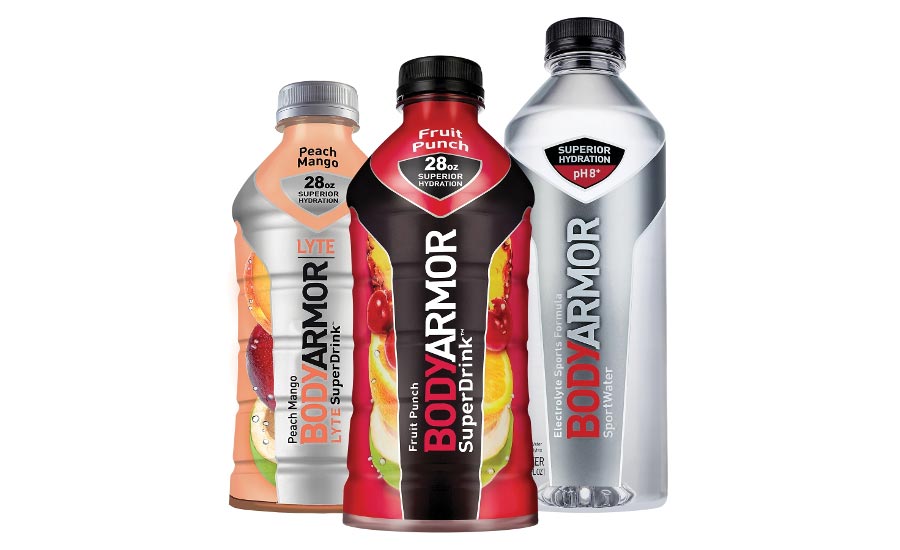Sports Nutrition Food & Beverage Category Flexing Its Muscles
Muscle Up: Sports related foods, drinks appeal to more US consumers interested in "active" nutrition.

Last year saw Coca-Cola purchase a minority share in BodyArmor, a competitor to PepsiCo's Gatorade.
PHOTO COURTESY OF: COCA-COLA COMPANY (WWW.COCA-COLACOMPANY.COM)

New options for those interested in plant-based protein options.
PHOTO COURTESY OF: VEGA (WWW.MYVEGA.COM)

Last fall saw Salt Lake City's Probar LLC promote strength training for area skiing. The company produces a wide range of protein and energy bars, bites, chews, spreads and other products.
PHOTO COURTESY OF: PROBAR LLC (WWW.THEPROBAR.COM)

Halo Lifestyle says its certified-organic, vegan-friendly formula offers more electrolytes than enhanced waters, fewer calories than packaged coconut water, and has no added sugar nor artificial coloring, unlike many traditional sports drinks. A bottle contains only 10 calories, 2g of natural sugar.
PHOTO COURTESY OF: HALO LIFESTYLE LLC (WWW.HALOSPORT.COM)




Here’s an example of a food and beverage category flexing its muscle. The concept of “active nutrition” is developing more widely as interest spreads beyond the traditional core base of bodybuilders, endurance athletes and high-level sportsmen. Today, the active and/or sports nutrition market is a mainstream category and more consumers are seeking everyday health and fitness as a lifestyle choice.
Innova Market Insights forecasts the market value for sports nutrition products will grow by around 8% per year to reach more than US$17 billion globally in 2021. That said, there are some signs that new product development growth—strong during the past five years overall—may be leveling out as the category matures.
Worldwide, the US remains by far the largest market with just under two-thirds of global value in 2017. It also accounted for more than 23% of sports nutrition launches globally in the 52 weeks to the end of September 2018, which is a very high share for a single country. This share has fallen in recent years, however, as markets have expanded in other regions, particularly Europe and Asia, Latin America also is showing high levels of activity from a much smaller base.
Innova Market Insights tracks six main subcategories within sports nutrition. Despite rising levels of interest in ready-to-use products for more convenient, on-the-go solutions, traditional sports powders continue to dominate global new product development. New powdered products account for 45% of the global total new product forms. That ranks them ahead of bars (which constitute 17.4% of all new offerings) and other sports products (gels, chews, snacks, etc.) at 16%.
The three remaining categories—by percentage of global new product activity—are supplements (making up 8.5% of launches), ready-to-drink (RTD) sports beverages (at 8.4% of new launches), and a relatively new RTD protein-based sports drinks subcategory (which accounts for about 4.5% of all new sports products).
Looking more closely at product development by country and region, it’s clear that the balance of product types is slightly different in the US. Again, the US has maintained relatively strong levels of new product development overall while its share of sports nutrition products—by type—vary somewhat from other regions (particularly Western Europe). During the same 52-week tracking period ended last September, Innova Market Insights found that sports powders accounted for more than 59% of total sports nutrition launches in the US. The next most popular product forms were supplements, ranked second at 10.9% of all launches; and sports bars, which ranked third with 9.1% of all launches.
Protein Power
Sports nutrition always has focused on protein content and this only has grown as more consumers express interest in protein in their mainstream foods and drinks.
Innova Market Insights found that nearly 45% of US sports nutrition launches used claims related to “high” protein or “added” protein, during the 12 months to the end of September 2018. This was led by traditional sports powders, which accounted for more 60% of overall new product activity. Interestingly, however, when it comes to market penetration figures, RTD protein sports drinks lead the pack, with nearly all product launches featuring the aforementioned claims, ahead of sports nutrition bars (83% have high/source/added protein claims).
Looking more directly at protein itself, it’s been interesting to see some shifting away from traditional whey and dairy protein sources to alternative plant-based sources. This reflects rising interest in plant-based diets and flexitarian eating and it’s evident across the food and beverage market as a whole—not just in sports nutrition.
Innova Market Insights found that vegan-friendly claims were used for 8% of all US food and drink launches during the 52 weeks to the end of September 2018. Interestingly, this percentage rises to 10.6% when it comes to vegan products in the sports nutrition category. More specifically, last year (through September) brought vegan claims on 17% of new protein sports drinks and 16% of new sports nutrition bar products.
Dedicated vegan sports nutrition product lines are appearing and/or moving more mainstream, as exemplified by the Vega range. Once a small, privately-owned operation, the brand was purchased by WhiteWave in 2015 to join the WhiteWave’s dairy-free, plant based portfolio. For the record, Vega has been part of Danone since its acquisition of WhiteWave (for the same dairy-free rationale) in 2016.
The Vega plant based nutrition line was updated in the first half of 2018 with taste and textural improvements, as well as new packaging. The line includes protein powders, bars, snacks, shakes and supplements and encompasses its Vega Sport and Vega Protein sub brands. The Vega brand revamp also marked the debut of a Vega One Organic All in One Shake, as well as the Vega 20g Protein Bar. More recently, brand officials also have introduced Vega Protein Crisps as snack alternatives to the more traditional sports bars. These crisps consist of bagged baked chips in Sweet Chili and Garlic & Herb flavors. They offer protein sourced from brown rice and peas, along with low sugar content and a moderate
calorie count.
Liquid Fuel
Sports drinks led the sports nutrition category’s move into the mainstream. Today, this sector is a very large and mature market globally, and that’s particularly true in the US. The protein drinks market has developed alongside it and there has been considerable blurring of boundaries between the two. As the market has moved into the mainstream, many beverage launches focus on hydration and health in sports or active lifestyle setting.
The RTD sports drinks market in the US is worth an estimated US$6.3 billion a year through multiple retailers alone, according to IRI. Power brands such as PepsiCo’s Gatorade and Coca-Cola’s Powerade account for nine of the top 10 brands (including all brand extensions). Newcomer Gatorade Flow Smooth Finish Thirst Quencher, launched in 2017, experienced of the best growth rates and moved into the top 10—landing in ninth place—during the year ending last May, according to IRI data. Gatorade’s 2018 activity included the launch of Gatorade Zero, a sugar-free alternative to the standard Thirst Quencher range.
Third in the sports drinks market (at a considerable distance) is BodyArmor. The brand launched in 2011 as a start-up by Mike Repole, who also was behind Glaceau’s vitaminwater and smartwater brands. The BodyArmor range, also encompassing light and enhanced-water varieties, is marketed as a premium, healthier alternative to Gatorade and Powerade.
Speaking of Powerade, its parent Coca-Cola made news last August by purchasing a minority share in BodyArmor. In doing so, it became the second-biggest investor after Repole himself. This perhaps leaves open the possibility of Coca-Cola taking full ownership later. Even now, with the new partnership, BodyArmor has access to the Coca-Cola distribution network and, combined with Powerade, can offer a much stronger challenge to Gatorade’s traditional market domination.
Sports drinks launch numbers remain limited in comparison with some other parts of the sports nutrition and soft drinks markets. Perhaps this reflects the relative lack of innovation opportunities. RTD sports drinks accounted for just 8.6% of US sports nutrition launches in 2018, ahead of the smaller and newer protein sports drinks sub-category, which generated 4.8% of all new products. New product activity has included Halo Lifestyle LLC’s launch of HALO Sport drinks, and Coca-Cola’s launch of Honest Sport, a sports drink variation of Honest Tea.
Energy: Power Up!
Although energy remains a significant benefit within the sports nutrition category, it also has seen increasing use as a positioning in the food and beverage category as a whole. This is particularly true when considering energy drinks and energy bars among a wide variety of other products.
To be clear, there are athletes and other active consumers who interested in energy products. Meanwhile, growing mainstream consumer interest in energy—involving tired teenagers, college students, weary workers and others in general—has led to a sizeable energy drinks market. From a new product tracking standpoint, meanwhile, it’s also important to note that energy drink new product launch numbers—just like those involving sports energy—all involve a relatively modest, small base.
Innova Market Insights found that energy drinks accounted for just 2.6% of US soft drinks launches during the 12 months to the end of September 2018. However, product sales have now reached nearly US$10 billion a year and are still rising, according to IRI data.
There are several interesting trend lines behind the headlines. Innova Market Insights finds that there are relatively limited innovation opportunities in the subcategory. Meanwhile, multinational brands dominate the category. Many mainstream soft drink companies have started their own brands and/or acquired the category’s smaller, diverse start-ups.
The US energy drinks market is dominated by non-aseptic offerings, mainly canned drinks. Here, the category’s iconic brands—such as Red Bull, Monster and Rockstar—have focused heavily on adding new formats and flavors. They also often feature limited editions and use a range of health and benefit claims.
Low and light varieties are increasingly in popular, particularly those using sugar reduction claims. Nearly 22% of launches used “low sugar,” “no added sugar” or “sugar-free” claims during the 12 months to the end of September 2018. This follows in the light of rising pressure to reduce sugar content in the soft drinks market as a whole. This share rises to more than 30% if low calorie claims also are included. Clean label claims also are popular. They were associated with 41% of launches, with organic leading on 23% alone.
Energy bars also are a growing market—although it often is difficult to define and categorize the segment with other snack bars, cereal bars and sports bars also in consideration. Innova Market Insights believes the overall bar market in the US is worth over US$6 billion in sales annually. Meanwhile, the market for nutritional or intrinsic health bars—generally encompassing energy bars—is worth about half of that.
In terms of new product development, “energy” and/or “alertness” claims were used for 12.2% of US cereal and energy bar launches during the 12 months to the end of September 2018. Not surprisingly, many products in the subcategory carry multiple health claims—including those related about “free from,” protein, fiber and/or whole grain content. There also are growing references to sugar reduction, vegan formulation and energy.
Recent new product launches featuring claims around “energy” or “alertness” include Probar LLC’s Probar Bite Coconut Almond Organic Energy Bar; Skyline Kitchen Inc.’s TeaSquares Tea Infused Energy Snacks; and S.B.F. LLC’s Better Than Coffee plant-based energy bars. Elsewhere, Glanbia Performance Nutrition introduced a branded retail line of high protein, reduced sugar bars under the thinkKIDS label. Abbott Nutrition also developed three new ZonePerfect High Protein bars (20g) for weight management or meal replacement.
As sports nutrition has continued its move mainstream, a major feature has been the rising interest in active nutrition, giving a performance positioning to more food and beverage products. According to Innova Market Insights data, the use of sports and recovery claims in tracked food and beverage launches had a CAGR of 29% during the 2012-2017 period, while energy/alertness claims were close behind with 25.8%.
In general, the sports nutrition sector continues to develop and diversify, particularly in terms of target market, with an increasingly wide range of consumers now in its sights, including those interested in different sports, exercise regimes and levels of activity. As many brands move mainstream and extend from a consumer base likely to have knowledge of their composition, use and efficacy, it is evident that manufacturers also have started to focus more on developing levels of knowledge among more casual users.
Originally appeared in the January, 2019 issue of Prepared Foods as Muscle Up.
Looking for a reprint of this article?
From high-res PDFs to custom plaques, order your copy today!













